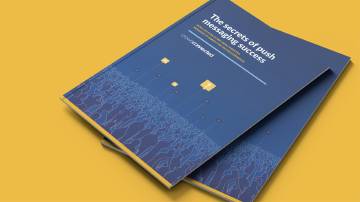Damaging Effects of Push Notifications

Mobile Push Notifications at Events: The hidden cost of getting it wrong
Push notifications can be damaging. Our location data has clearly shown negative responses lasting days.
Major events around the world use Crowd Connected’s Engage platform. It brings a new level of precision targeting to mobile push notifications. Many of the messages sent aim to help customers discover the best possible festival experience. They suggest routes, facilities or performances at just the right moment to guide the customer journey.
In 2016 we provided Impact Analysis for these discovery messages at Latitude Festival. Later that year we presented a case study at the Event Tech Live conference in London. Impact Analysis measures how mobile push notifications change real-world customer behaviour.
In 2016 our analysis was post-event. Our platform captured data about the messages sent and received, and location histories from customers. That enabled us to measure how many more customers used the route, saw the performance, or visited the attraction because of the message.
Since June 2017 we have been providing our customers with live ‘R4 Scores’. This provides real-time measurement of impact within Engage, our push notification CMS. This new capability has been used by multiple events across multiple countries.
The most important finding has been the number of negative reaction messages. These are push notifications that make people LESS likely to use the route, visit the place, or experience the performance that has been suggested. The effect can persist into the following day.
This is a really important finding. Imagine you’re sending notifications encouraging customers to visit a sponsor’s location. Those messages might actually be reducing their footfall.
From varied messages across a variety of events, we’re starting to see some patterns.
Messages that just tell the customer to do something that they were already aware of perform worst. This is pure advertising. There’s really no value to the customer. There’s no new information provided. There’s no enhancement to the customer experience or the service. And regularly we see these types of messages actually REDUCE footfall to the advertised location.
Messages that make customers aware of something new, provide information on options, or in some way add something to the service or customer experience, work well.
This has some interesting implications for location-based targeting. A common tactic is to target messages to customers based on their location right now. Nearby is relevant, and far away isn’t. This is sometimes called proximity marketing, and is often achieved using beacons.
If you’re a retail chain, this could make some sense. If you send an offer that’s redeemable in the next hour, it doesn’t make much sense if the customer is 500 miles from your nearest location.
But at events, distances are shorter. A passer-by is likely to already be aware. They can see the sponsor location. A message suggesting they pop in is just the kind of advertisement that can negatively affect footfall. Conversely just because someone is the other side of the event site, doesn’t suggest a lack of relevance. They still may only be minutes away.
So to improve the effectiveness of mobile push notifications at events, we suggest considering the following:
- Don’t target messages to customers just because they’re near the location you’re messaging about. Try to find ways to target customers who have behaved in a way that suggests they might value the message. For example if you’re messaging about a music artist, pick customers who have visited similar stages, or similar artists already.
- Try to send messages that have some information in them that can’t be found elsewhere. That makes the message immediately more valuable to the customer.
- Sending news and updates that customers would want to share with their friends can make the message more valuable.
Above all, measure. If you’re not measuring message impact, you may be sending damaging notifications without knowing it.


